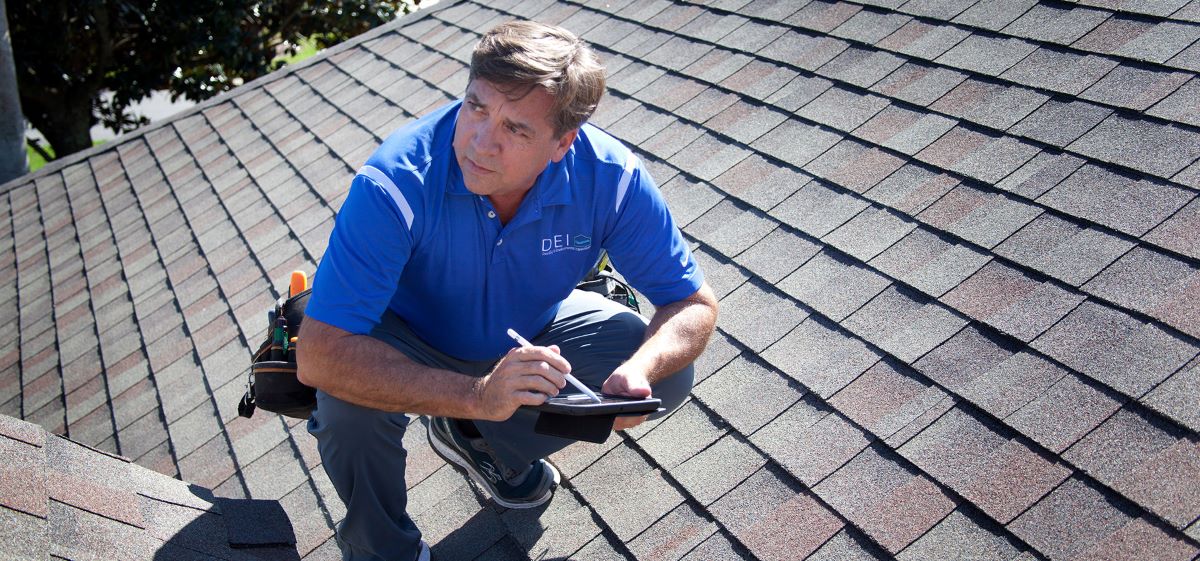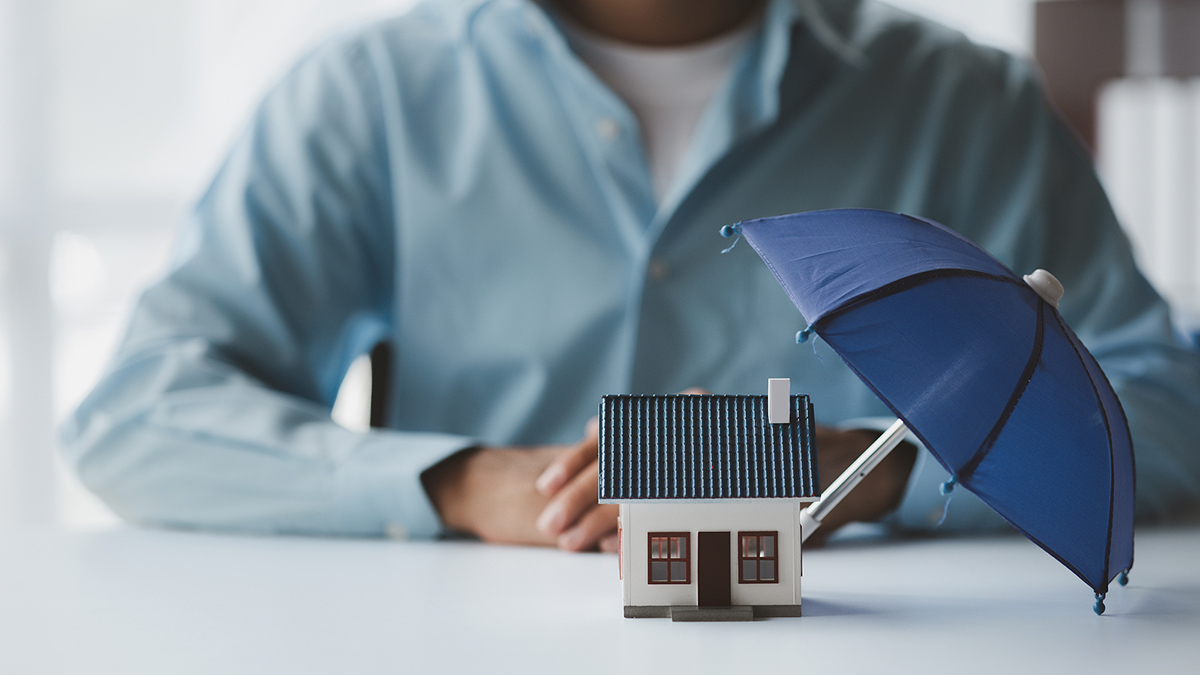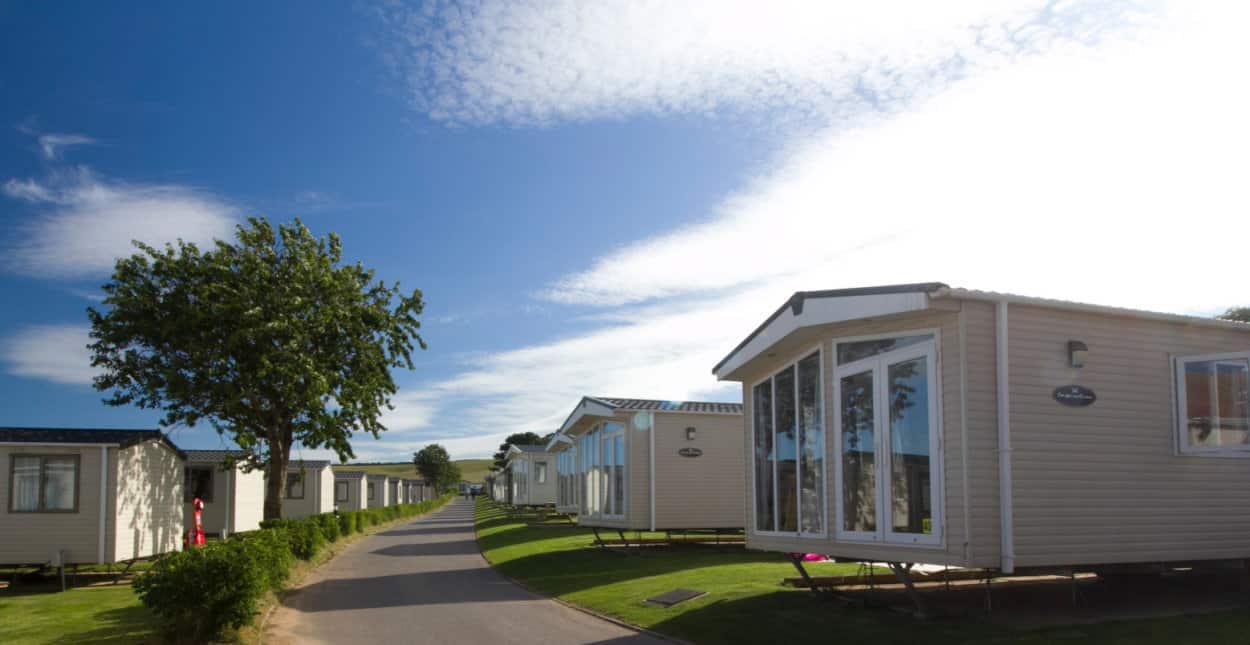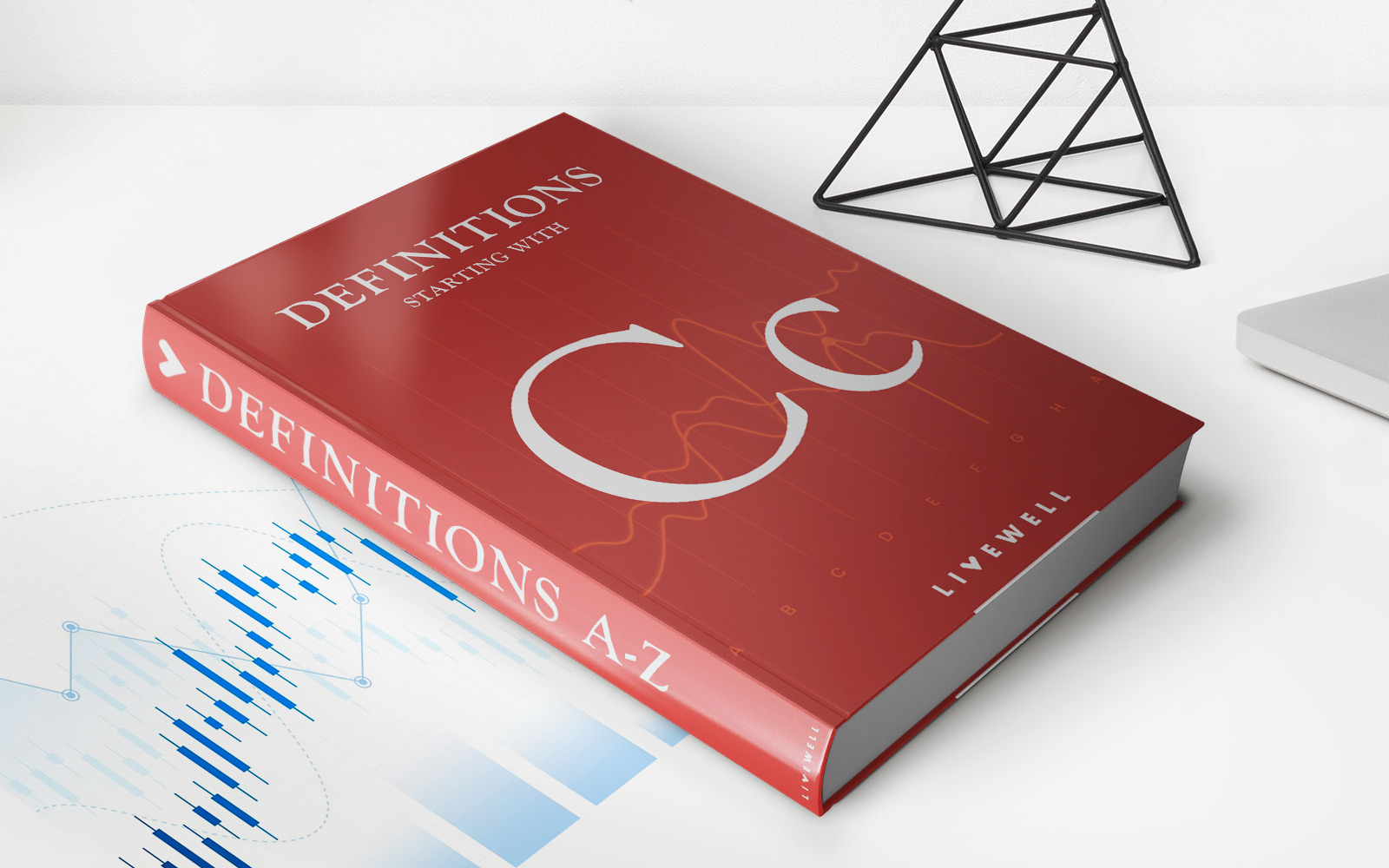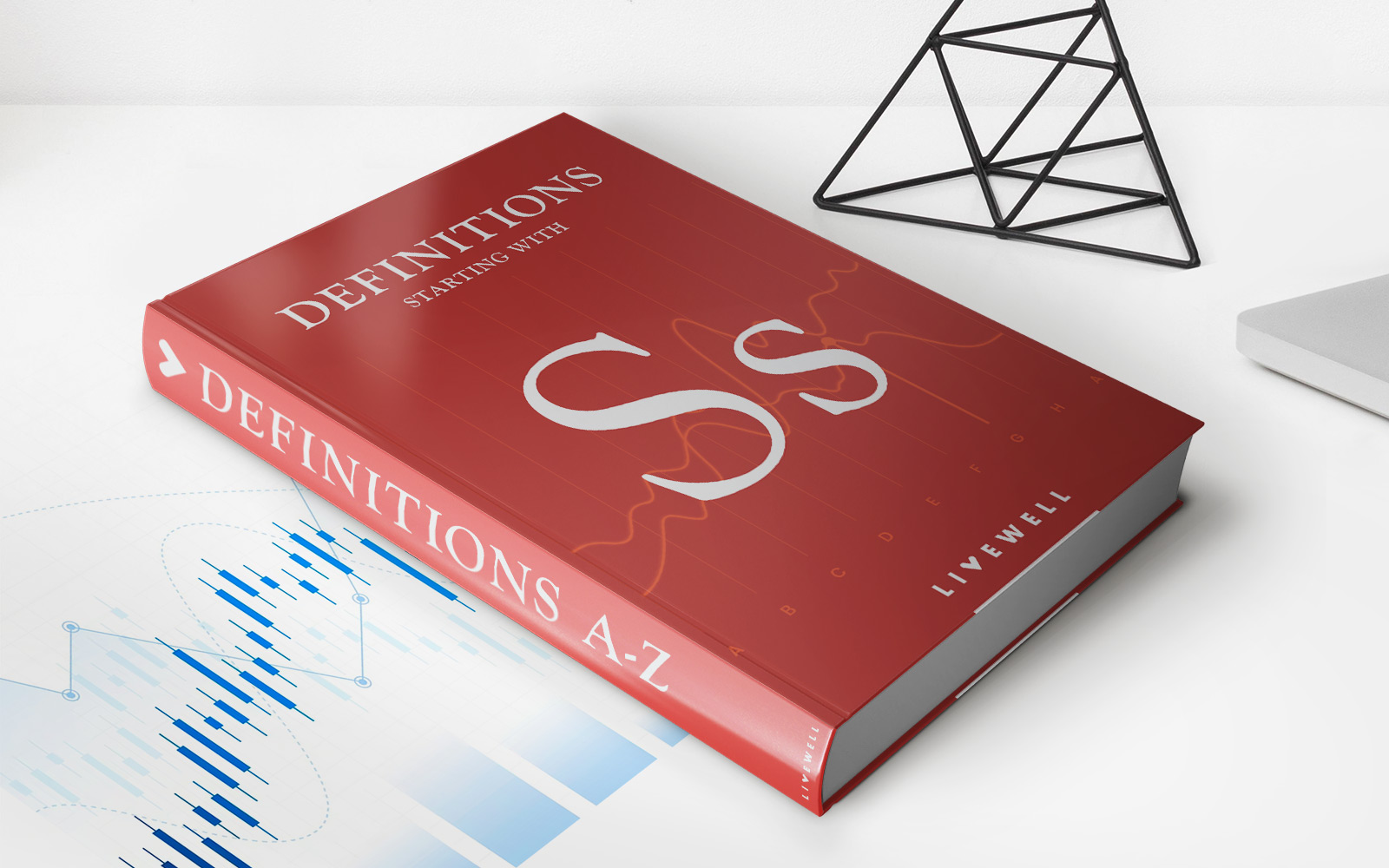

Finance
How Is Home Insurance Calculated?
Published: November 17, 2023
Learn how home insurance rates are calculated based on various factors including finance, location, property value, and more. Understanding the process can help you make informed decisions when choosing a policy.
(Many of the links in this article redirect to a specific reviewed product. Your purchase of these products through affiliate links helps to generate commission for LiveWell, at no extra cost. Learn more)
Table of Contents
- Introduction
- Factors Affecting Home Insurance Premiums
- Replacement Cost vs. Actual Cash Value
- Determining Coverage Limits
- Deductibles and Policy Limits
- Location and Risk Factors
- Home Characteristics and Construction
- Home Security Measures
- Credit Score and Claims History
- Discounts and Additional Coverage Options
- Conclusion
Introduction
Home insurance is an essential aspect of protecting your property and belongings against unexpected incidents or disasters. Whether you are a homeowner or a renter, having the right insurance coverage ensures peace of mind and financial security. But have you ever wondered how home insurance premiums are calculated? Understanding the factors that influence the cost of home insurance can help you make informed decisions when choosing a policy.
While home insurance premiums can vary based on individual circumstances, there are several common factors that insurance companies consider when determining the cost of coverage. These factors include the replacement cost of the home, its location, construction materials, risk factors, and personal factors like credit score and claims history.
Replacement cost is a key factor in calculating home insurance premiums. It is the amount it would take to rebuild your home from scratch, including construction materials and labor costs. Insurance companies use this value to ensure that the coverage limit adequately reflects the cost of rebuilding your home in case of a total loss. The higher the replacement cost, the higher the premium.
Another term to be familiar with is actual cash value (ACV). This refers to the value of your belongings or property, taking into account depreciation. ACV policies may have lower premiums since they factor in the age and condition of items. However, they may not provide the same level of coverage as policies that offer replacement cost. It is important to carefully consider and understand the difference when choosing an insurance policy.
The coverage limits of your home insurance policy also impact the premium amount. Coverage limits refer to the maximum amount that an insurance company will pay for a covered loss. Typically, policies with higher coverage limits will have higher premiums. It is important to assess your needs and choose coverage that adequately protects your home and possessions without exceeding your budget.
Factors Affecting Home Insurance Premiums
When it comes to determining the cost of your home insurance premiums, several factors come into play. Insurance providers consider these factors to assess the risk associated with insuring your property. Let’s take a closer look at some of the key factors that can affect your home insurance premiums:
- Location: The location of your home plays a significant role in determining your insurance premium. Homes located in areas prone to natural disasters like hurricanes, earthquakes, or floods may attract higher premiums. Additionally, living in a high-crime area can also increase the insurance cost.
- Home Value and Replacement Cost: The value of your home and the cost to rebuild or repair it are crucial factors in calculating insurance premiums. Generally, more expensive or high-value homes will have higher premiums, as the potential cost of damages or repairs is greater.
- Home Characteristics and Construction: The construction materials and features of your home can affect insurance costs. Homes made of fire-resistant materials, like brick or stone, may have lower premiums compared to homes with flammable materials. Additionally, the age and condition of the property, as well as the presence of safety features like smoke detectors and fire sprinklers, can influence the premium.
- Personal Factors: Your personal characteristics can also impact your home insurance premiums. Insurance providers may consider factors such as your credit score, claims history, and occupation to assess risk. A higher credit score and a clean claims history can often result in lower premiums.
- Deductibles: The deductible is the amount you pay out of pocket before your insurance coverage kicks in. Choosing a higher deductible can lower your premiums, but it means you’ll have a higher upfront cost if you file a claim.
- Home Security Measures: Installing security devices like alarms, surveillance cameras, and deadbolt locks can help reduce the risk of theft or vandalism, thus potentially lowering your insurance premiums.
- Previous Claims: Insurance companies take into account your previous claims history. Multiple claims or a history of frequent claims may result in higher premiums, as it suggests a higher risk of future claims.
- Discounts: Insurance providers often offer discounts for various reasons, such as bundling your home and auto insurance, having a good credit score, or being a long-term customer. Taking advantage of these discounts can help reduce your premiums.
It is important to note that the weight given to each factor may vary among insurance providers. To get the most accurate understanding of how these factors specifically affect your premium, it is best to consult with insurance professionals or request quotes from multiple companies.
Replacement Cost vs. Actual Cash Value
When purchasing home insurance, one important concept to understand is the difference between replacement cost and actual cash value (ACV). These two terms refer to how your insurance provider determines the value of your property or belongings in the event of a covered loss.
Replacement Cost: Replacement cost is the amount it would take to rebuild or repair your home and replace your belongings with similar items at today’s prices. This value does not consider depreciation and typically provides more comprehensive coverage. If you experience a covered loss, your insurance company will reimburse you for the full cost of replacing or repairing your damaged property.
Actual Cash Value (ACV): Actual cash value accounts for depreciation when determining the value of your property or belongings. Depreciation takes into account the age, condition, and wear and tear of an item. If you have an ACV policy and experience a covered loss, your insurance provider will reimburse you for the current value of the damaged property.
The choice between replacement cost and ACV policies can have an impact on your home insurance premiums. ACV policies generally have lower premiums because they offer coverage based on the depreciated value of your possessions. However, it’s important to note that ACV policies may not provide sufficient funds to fully replace or repair your damaged items. This is especially true for older or high-value items that may have depreciated significantly.
On the other hand, replacement cost policies typically have higher premiums, as they offer coverage that reflects the current cost of replacing or repairing your property without factoring in depreciation. This type of policy is often recommended because it ensures you have adequate funds to cover the full cost of rebuilding or replacing damaged items.
When choosing between replacement cost and ACV policies, it’s essential to consider your personal circumstances and budget. If you have valuable possessions that may depreciate quickly or you want the peace of mind of being able to fully replace your belongings, a replacement cost policy is the better option. However, if you are working with a tighter budget and are willing to assume some of the financial responsibility for replacing depreciated items, an ACV policy might be more suitable.
Always review and understand the terms and conditions of your home insurance policy to ensure you have the appropriate coverage for your needs. It’s also beneficial to periodically reassess your coverage as the value of your property and belongings may change over time.
Determining Coverage Limits
Choosing the right coverage limits for your home insurance policy is essential to ensure that you have adequate protection in the event of a loss or damage. Coverage limits refer to the maximum amount your insurance provider will pay for a covered claim. It’s crucial to understand how coverage limits are determined and how they can impact your insurance premium.
There are a few key factors to consider when determining your coverage limits:
- Rebuilding Cost: The primary factor in establishing coverage limits is the cost to rebuild your home in the event of a total loss. This cost includes labor, materials, and any necessary additional expenses. It’s essential to accurately estimate the rebuilding cost to ensure your coverage limit is sufficient. Consulting with a professional appraiser or using reputable online tools can help you determine an accurate rebuilding cost.
- Personal Belongings: Your coverage limit should also consider the value of your personal belongings. Make a detailed inventory of your possessions, including furniture, electronics, appliances, clothing, and any valuable items. Assigning realistic values to these items will help you determine the appropriate coverage limit for your personal property.
- Liability Coverage: In addition to protecting your property and belongings, your home insurance policy should provide liability coverage. This coverage protects you financially if someone is injured on your property or if you accidentally cause damage to someone else’s property. The recommended liability coverage limit is typically a minimum of $100,000, but you may want to consider higher limits based on your assets and potential risks.
Once you have determined the appropriate coverage limits for your home and personal belongings, you can choose a policy that aligns with your needs and budget. It’s important to note that higher coverage limits often result in higher premiums. However, opting for lower coverage limits to save on premiums can leave you financially vulnerable if you face a significant loss. It’s crucial to strike a balance between adequate coverage and affordability.
Regularly reassessing your coverage limits is also important. As the value of your home and possessions may change over time, it’s essential to update your coverage limits accordingly. Review your policy annually or whenever you make significant renovations or acquire valuable new possessions to ensure that your coverage remains adequate.
Lastly, remember that the coverage limits provided by your insurance company may include sub-limits or additional coverages for specific items or events. Be sure to review these sub-limits and consider if you need additional coverage options to adequately protect your property and belongings.
By carefully assessing your coverage needs and considering the potential risks, you can determine appropriate coverage limits that provide the necessary protection and give you peace of mind.
Deductibles and Policy Limits
When selecting a home insurance policy, it is crucial to understand the concepts of deductibles and policy limits. These factors play a significant role in determining the coverage and cost of your insurance. Let’s dive deeper into deductibles and policy limits and their impact on your home insurance.
Deductibles: A deductible is the amount you must pay out of pocket before your insurance coverage kicks in. It is the portion of the claim that you are responsible for covering. Common deductible amounts range from $500 to $2,500, but they can be higher or lower depending on your policy. Choosing a higher deductible can help lower your monthly or annual premiums, as you are assuming more of the financial risk in the event of a claim. Conversely, opting for a lower deductible will result in higher premiums, but it means less out-of-pocket expenses when you need to make a claim.
Policy Limits: Policy limits refer to the maximum amount that your insurance provider will pay for a covered claim. These limits can apply to different aspects of your coverage, such as dwelling, personal property, and liability. It is essential to closely review the policy limits of your home insurance to ensure that they adequately cover your assets. If the coverage limits are too low, you may be left with financial gaps in the event of significant loss or damage. On the other hand, if the limits are too high, you may be paying for more coverage than you need.
When deciding on deductibles and policy limits, consider your personal circumstances and tolerance for risk. If you have a substantial emergency fund and can comfortably handle a higher out-of-pocket expense, selecting a higher deductible can result in lower premiums. However, if you prefer more predictable costs in the event of a claim, a lower deductible may be a better option.
It is also important to carefully assess your coverage needs to determine appropriate policy limits. Consider factors such as the value of your home, the cost to replace your personal belongings, and your potential liability risks. Evaluating these factors will help you select policy limits that provide adequate coverage without overpaying for unnecessary protection.
It’s worth noting that some insurance providers offer options for additional coverage beyond the standard policy limits. This can include higher liability limits, coverage for specific high-value items, or endorsements for natural disasters. If you have unique coverage needs, it’s worth discussing these options with your insurance provider to ensure your policy adequately protects your home and assets.
Remember, it’s important to regularly review and reassess your deductibles and policy limits as your circumstances change. Major life events, renovations, or acquisitions of valuable items may require adjustments to your coverage. Keeping your insurance up to date ensures that you maintain appropriate coverage and protection for your home and assets.
Location and Risk Factors
The location of your home plays a significant role in determining your home insurance premium. Insurance providers take into account various risk factors associated with your location. Let’s explore how location impacts your home insurance and the risk factors that insurers consider.
Natural Disasters: If you live in an area prone to natural disasters such as hurricanes, earthquakes, wildfires, or floods, your home insurance premium may be higher. The frequency and severity of these events in your location will influence the level of risk and potential claims for insurance companies. In areas with a higher risk of natural disasters, insurance companies may require additional coverage or impose higher premiums to account for the potential costs of repairing or rebuilding after such events.
Crime Rates: The crime rate in your area is another factor that insurers consider when calculating your home insurance premium. Higher crime rates, including burglary and vandalism, can increase the risk of property damage and theft, leading to higher premiums. Neighborhoods with lower crime rates may be perceived as lower risk and may qualify for lower insurance premiums.
Proximity to Fire Stations: The proximity of your home to fire stations and hydrants can impact your home insurance premium. Homes located closer to these emergency services tend to have faster response times in the event of a fire, potentially reducing the severity of damage. As a result, insurers may offer lower premiums for homes located in close proximity to fire stations.
Building Codes and Regulations: Some areas have stricter building codes and regulations to ensure structures can withstand specific risks, such as earthquakes or hurricanes. If your home is built to higher safety standards or incorporates specific features that mitigate these risks, it may qualify for lower insurance premiums. Insurance companies see these features as reducing the likelihood and severity of potential losses.
Flood Zones: If your home is located in a designated flood zone, you may be required to have additional flood insurance coverage. Flood insurance is typically separate from standard home insurance policies and provides protection against damages caused by flooding. The level of risk associated with your specific flood zone will impact the cost of flood insurance and potentially affect your overall insurance premium.
It’s important to note that every insurance company evaluates and weights these location-specific risk factors differently. Additionally, risk factors can vary even within a specific area. Therefore, it’s essential to shop around and obtain quotes from multiple insurance providers to ensure you are getting the best coverage and premium for your location.
When living in an area with higher risk factors, you may also have the option to take steps to mitigate those risks. For example, installing security systems, fire alarms, and sprinklers can help reduce the risk of loss due to theft or fire, potentially resulting in lower premiums. Similarly, in flood-prone areas, elevating your home or taking steps to mitigate water damage can impact your flood insurance rates.
Understanding the location-related risk factors that impact your home insurance premium allows you to make informed decisions about your coverage and take appropriate measures to reduce risks. Be sure to discuss these factors with your insurance provider to ensure you have adequate coverage for your specific location and circumstances.
Home Characteristics and Construction
The characteristics and construction of your home are important factors that insurance providers consider when determining your home insurance premium. Different features and materials can affect the risk of damage or loss, and insurance companies take these factors into account when assessing your coverage. Let’s explore how home characteristics and construction impact your insurance premium:
Age of the Home: The age of your home is a significant factor in determining your insurance premium. Older homes may require more maintenance and repairs, potentially increasing the risk of claims. Additionally, older homes may have outdated electrical, plumbing, or heating systems that could pose a higher risk of fire or water damage.
Building Materials: The materials used in your home’s construction can impact your insurance premium. Homes made of fire-resistant materials, such as brick or concrete, tend to have lower risk profiles and may qualify for lower premiums. On the other hand, homes constructed with flammable materials like wood may be considered higher risk and may result in higher premiums.
Roof Type: The type and condition of your roof can also affect your insurance premium. Roofs made of more durable and fire-resistant materials, such as metal or tile, are generally considered less risky and may result in lower premiums. Conversely, roofs made of materials like asphalt shingles may have a higher risk of damage and may lead to higher premiums.
Square Footage and Living Area: The size of your home, as measured by square footage and living area, is another factor that insurers consider. Larger homes generally have higher premiums since the potential cost of repairs or claims would also be higher. Additionally, homes with additional structures or mother-in-law suites may require additional coverage and can impact the premium.
Condition of the Home: The overall condition of your home, including its maintenance and upkeep, can affect your insurance premium. Homes that are well-maintained and in good condition may be seen as lower risk and may qualify for lower premiums. Regular maintenance, such as updating electrical systems and plumbing, can help mitigate potential risks and lower your insurance costs.
Accessibility Features: Homes with accessibility features, such as ramps or widened doorways for wheelchair access, may qualify for certain discounts or modifications to their coverage. These features can improve safety and reduce the risk of accidents, potentially resulting in lower premiums.
When obtaining a home insurance policy, accurately providing details about the characteristics and construction of your home is crucial. Insurance companies may require specific information, such as the year of construction, updates or renovations, and the types of materials used. It’s important to be thorough and honest to ensure you have the appropriate coverage and to avoid any issues during the claims process.
Keep in mind that each insurance company evaluates home characteristics differently, so it’s essential to compare quotes from multiple providers. Additionally, updating your insurance provider about any changes or renovations to your home can ensure that you have adequate coverage and may even result in adjustments to your premium.
Understanding how home characteristics and construction impact your insurance premium allows you to make informed decisions about your coverage and take appropriate steps to mitigate risks. Consult with your insurance provider to ensure you are adequately protected and to discuss any available discounts or adjustments based on your home’s unique features.
Home Security Measures
Home security measures play a crucial role in protecting your property and belongings against theft and vandalism. Insurance providers take into account the security features of your home when determining your home insurance premium. Implementing effective security measures can not only give you peace of mind but also potentially lower your insurance costs. Let’s explore some common home security measures that can impact your insurance premium:
Alarm Systems: Installing a professionally monitored burglar alarm system can significantly reduce the risk of theft and intrusion. These systems detect unauthorized entry, trigger alarms, and alert the monitoring company and/or authorities. Homes with alarm systems are generally seen as lower risk and may qualify for lower insurance premiums.
Security Cameras: Surveillance cameras provide an additional layer of security by recording activity around your property. These cameras can deter criminals and provide valuable evidence in the event of an incident. Some insurance providers offer discounts for homes equipped with security cameras, as they act as a deterrent and aid in investigation and recovery efforts.
Deadbolt Locks and Reinforced Doors: Upgrading your door locks to high-quality deadbolt locks and reinforcing doors can make unauthorized entry more difficult. These measures enhance the security of your home and may lead to lower insurance premiums.
Window Security: Reinforcing windows with impact-resistant glass, installing window locks, or using security film can make it harder for intruders to gain access to your home. Such security measures can help lower the risk of break-ins and potentially result in lower insurance costs.
Home Security Signs and Stickers: Displaying signs or stickers indicating the presence of a security system or surveillance cameras can act as a deterrent to potential intruders. Even if you do not have an actual security system, the perception of increased security can potentially lower your insurance premiums.
Security Lighting: Adequate exterior lighting can deter criminals by increasing visibility and making it more difficult for them to approach your property undetected. Motion-sensor lights, well-lit entryways, and properly placed outdoor lighting can enhance the security of your home and may result in lower insurance premiums.
Gated Community or Neighborhood Watch: Living in a gated community or a neighborhood with an active neighborhood watch program can contribute to a safer environment. Insurance companies may consider these factors when assessing the risk associated with your location, potentially resulting in lower insurance premiums.
It’s important to note that the impact of security measures on insurance premiums can vary depending on the insurance provider and the specific circumstances. To determine the eligibility for any discounts or adjustments, it is advisable to consult with your insurance company directly or seek quotes from multiple providers.
Remember to inform your insurance provider about the security measures you have implemented. Providing accurate and up-to-date information can help ensure that you receive any applicable discounts and that your coverage accurately reflects the security features of your home.
By implementing effective home security measures and communicating them to your insurance provider, you can increase the security of your property, potentially reduce the risk of theft or vandalism, and may even qualify for lower home insurance premiums.
Credit Score and Claims History
When it comes to home insurance premiums, it’s not just about the condition of your home and its location. Insurance providers also consider your credit score and claims history as factors that can impact your insurance rates. Let’s explore how these factors can influence your home insurance premium:
Credit Score: Insurance companies use credit-based insurance scores to assess the risk of insuring individual policyholders. Studies have shown a correlation between credit history and the likelihood of filing a claim. Generally, individuals with higher credit scores are seen as lower risk and may be offered lower premiums. Conversely, individuals with lower credit scores may be charged higher premiums due to the perceived higher risk of filing a claim.
It’s important to note that the use of credit scores in insurance varies depending on the jurisdiction and insurance regulations. Some states have limitations on how insurance companies can use credit information in determining premiums. Be sure to familiarize yourself with the regulations in your area.
Claims History: Your past claims history also plays a role in determining your home insurance premium. Individuals with a history of making frequent claims or filing claims for significant losses may be considered higher risk and may be charged higher premiums. On the other hand, policyholders with a clean claims history or a history of minimal claims are likely to be offered lower premiums.
When it comes to filing claims, it’s important to carefully assess the situation and determine whether it’s necessary to file a claim. Filing multiple small claims within a short time frame can impact your claims history and potentially lead to higher premiums. It’s advisable to consider the potential impact on your premium before deciding to file a claim. Remember, insurance is designed to protect against significant losses, and smaller claims may be better handled out of pocket to avoid future premium increases.
Improving your credit score and maintaining a clean claims history can help to keep your home insurance premiums affordable. To keep your credit score in good standing, make sure to pay your bills on time, keep your credit utilization low, and monitor your credit report for any errors or discrepancies. Being proactive in managing your credit can have a positive impact on your insurance premiums.
It’s worth noting that each insurance company has its own underwriting guidelines and may weigh credit scores and claims history differently. Therefore, it’s important to shop around and obtain quotes from multiple insurance providers to find the best coverage and premium for your specific situation.
By maintaining a good credit score and a clean claims history, you can potentially reduce your home insurance premiums and demonstrate to insurance providers that you are a responsible policyholder.
Discounts and Additional Coverage Options
When shopping for home insurance, it’s important to explore the various discounts and additional coverage options available. Taking advantage of discounts can help lower your premium, while additional coverage options can provide enhanced protection based on your specific needs. Let’s explore some common discounts and additional coverage options that you should consider:
Bundle Discounts: Many insurance providers offer bundle discounts when you combine your home and auto insurance policies with the same company. This can result in significant savings on both policies and simplify your insurance management.
Claims-free Discount: Insurance companies may offer discounts to policyholders who have a claims-free history for a certain period. Maintaining a clean claims record over time can result in lower premiums as it demonstrates a lower risk of future claims.
Security System Discounts: Installing a security system, such as a monitored burglar alarm or surveillance cameras, can make you eligible for discounts on your insurance premiums. These security measures reduce the risk of theft and vandalism, providing added protection to your home.
Fire Prevention Discounts: Homes equipped with fire prevention measures, such as smoke detectors, fire extinguishers, or sprinkler systems, may qualify for discounts. These measures reduce the risk of fire-related damage, and insurance companies often reward proactive fire prevention measures with lower premiums.
New Home Discounts: If your home is newly constructed or recently renovated, you may be eligible for a discount. Newer homes have up-to-date electrical, plumbing, and structural components, reducing the risk of claims and potentially resulting in lower premiums.
Age-specific Discounts: Some insurance providers offer discounts based on the age of the policyholder. This can be particularly relevant for older adults or retirees who may spend more time at home, reducing the risk of certain claims.
Additional Coverage Options: Depending on your needs, you may want to consider additional coverage options. These can include coverage for high-value items such as jewelry or artwork, identity theft protection, or coverage for specific natural disasters like earthquakes or floods. Adding these additional coverages to your policy ensures that your unique needs are met and provides extra peace of mind.
It’s essential to discuss available discounts and additional coverage options with insurance providers during the quoting process. Different insurance companies may offer varying discounts and coverage options, so obtaining quotes from multiple providers and comparing them thoroughly is recommended.
Remember, while discounts can help lower your premium, it’s important to also consider the coverage provided. Don’t compromise on coverage just to obtain a lower premium. Balancing adequate coverage with available discounts is key to getting the best value for your insurance.
By exploring and taking advantage of discounts and additional coverage options, you can customize your home insurance policy to meet your specific needs while potentially reducing your premium. Regularly reviewing your policy and discussing changes or updates with your insurance provider can ensure that you’re getting the most out of your coverage.
Conclusion
Understanding how home insurance premiums are calculated is essential for every homeowner or renter. By familiarizing yourself with the factors that influence insurance rates, you can make informed decisions when selecting a policy and ensure that your coverage adequately protects you and your property.
Factors such as the replacement cost of your home, actual cash value, coverage limits, deductibles, and policy limits all play a significant role in determining your premium. Additionally, location-specific factors like natural disasters, crime rates, and proximity to emergency services can impact the cost of your insurance.
Moreover, the characteristics and construction of your home, such as age, building materials, roof type, and overall condition, contribute to the calculation of your premium. Implementing home security measures, maintaining a good credit score, and having a clean claims history can also influence your insurance rates. Taking advantage of available discounts and considering additional coverage options can further optimize your policy and potentially lower your premiums.
Remember, it’s important to regularly review your insurance coverage to ensure that it still meets your needs. Changes in your home, possessions, or personal circumstances may require adjustments to your policy limits or additional coverage.
When shopping for home insurance, obtain quotes from multiple providers and compare both coverage and premiums. This will enable you to find the best combination of cost and protection for your specific needs and budget.
By understanding the factors affecting home insurance premiums and making smart choices in terms of coverage and risk management, you can confidently protect your home and belongings while enjoying peace of mind in the face of unexpected events.


